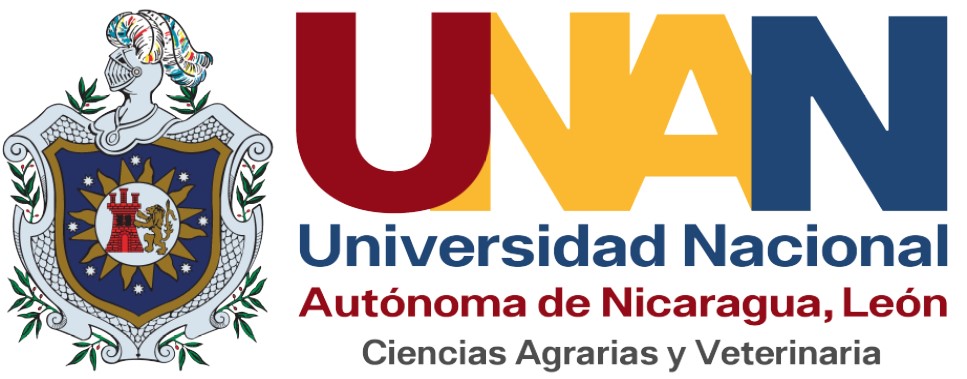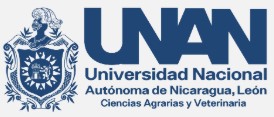Food security and sovereignty
DOI:
https://doi.org/10.5377/ribcc.v2i1.5702Keywords:
Food safety, Food Sovereignty, Globalization, Nutrition, LawAbstract
This paper focused on the review of the literature to know the main definitions of food security and sovereignty, establish their differences, and how globalization intervenes in the application of these concepts in the world. It is concluded that food security and sovereignty constitutes a fundamental part for all sectors in developing countries, as in the case of Nicaragua. In education and rural development, food security and sovereignty is very important to evaluate its effects. Globalization as a new form of domination, tries to impose on countries like ours what needs to be produced, and also how to do it to satisfy the demands and needs of the most powerful nations. They also impose what we must consume, forcing us to be consumers and importers of junk food. Regrettably, the guidelines of a healthy diet are subject to the laws of the international market, and oblige us to consider the formulation of a Food Policy that equitably distributes the goods that we produce, that guarantees the right of our people to Food, which guarantees Food Security and above all, the Food Sovereignty of this country that we love. It is due to this fact that in our legislation there are already laws that treat the solution to this problem.
Downloads
Metrics
References
Altieri, M. A., & Nicholls, C. I. (2012). Agroecología: única esperanza para la soberanía alimentaria y la resiliencia socioecológica. Agroecología, 7(2), 65-83.
Appendini, K., Barrios, R. G., & De La Tejera, B. (2003). Seguridad alimentaria ycalidad'de los alimentos:¿ una estrategia campesina?. European Review of Latin American and Caribbean Studies, 65-84.
https://doi.org/10.18352/erlacs.9694
Cerdà, M. O., & Ferré, M. G. R. (2010). Indicadores internacionales de Soberanía Alimentaria: nuevas herramientas para una nueva agricultura. Revista Iberoamericana de Economía Ecológica (REVIBEC), (14), 53-77.
CIP. (2006). Comité Internacional de Planificación de las ONG/OSC para la soberanía alimentaria. La reforma agraria en el contexto de la soberanía alimentaria. El derecho a la alimentación y a la diversidad cultural: tierra, territorio y dignidad. Documento temático cinco de la Conferencia Internacional sobre la Reforma Agraria y el Desarrollo Rural. Porto Alegre. Marzo 2006. ftp://ftp.fao.org/docrep/fao/meeting/011/j8160s.pdf. Visitado 03 de marzo del 2016.
Dehollain, P. L. (1995). Concepto y condicionantes de la seguridad alimentaria en hogares. Revista agroalimentaria, 1(1), 4.
Domı́nguez, D. (2015). La Soberanía Alimentaria como enfoque crítico y orientación alternativa del sistema agroalimentario global. Revista Pensamiento Americano, 8(15).
FAO, (2004). Organización de las Naciones Unidas para la Agricultura y la Alimentación. El estado de la inseguridad alimentaria en el mundo. Seguimiento de los avances en la consecución de los objetivos de la Cumbre Mundial sobre la Alimentación y de los Objetivos de desarrollo del Milenio. Disponible en www.fao.org/docrep/fao/007/y5650s/y5650s00.pdf.
FAO. (2012). Informe de la 32ª Conferencia Regional de la FAO para América Latina y el Caribe.
Forum de ONG/OSC para la Soberanía Alimentaria celebrado en Roma en el (2002) http://www.fes- sociologia.com/files/congress/10/grupos-trabajo/ponencias/892.pdf. Visitado 03-03-2016.
García, X. (2003). La Soberanía Alimentaria: un nuevo paradigma. Colección Soberanía alimentaria. Documento 1. Veterinarios sin Fronteras. ftp://ftp.fao.org/docrep/fao/meeting/011/j8160s.pdf. Visitado 03-03-2016.
Gordillo, G. (2012). Seguridad y Soberanía Alimentarias: Documento base para la discusión. http://www.fao.org/3/a-ax736s.pdf. Visitado 03-03-2016.
Hidalgo Moratal, M. (2013). Crisis, poverty and hunger. Food sovereignty as an alternative. Iberoamerican Journal of Development Studies, 2(2), 4-37
https://doi.org/10.26754/ojs_ried/ijds.84
La Vía Campesina. (1996). Declaración final de la II conferencia internacional de La Vía Campesina en Tlaxcala. Disponible en: http://www.viacampesina.org/(consultado 03/2016).
Manzanal, M., & González, F. (2010). Soberanía alimentaria y agricultura familiar. Oportunidades y desafíos del caso argentino" en Realidad Económica, 255, 12-42.
McMichael, P. (1998). Global food politics. Monthly Review, 50(3), 97.
https://doi.org/10.14452/MR-050-03-1998-07_8
Parker, D. (2008). Chávez y la búsqueda de una seguridad y soberanía alimentarias. Revista Venezolana de Economía y Ciencias Sociales, 14(3), 121-143.
Pedraza, D. F. (2003). Seguridad alimentaria familiar. Universidad Federal de Pernambuco. Bolsista CAPES/CNPq-IELN-Brasil
Pengue, W. A. (2004). Producción agroexportadora e (in) seguridad alimentaria: El caso de la soja en Argentina. Revibec: revista iberoamericana de economía ecológica, 1, 46-55.
Van der Ploeg, J.D. (2009). The New Peasantries: new struggles for autonomy and sustainability in anera of empire and globalization. London: Earthscan. http://www.jandouwevanderploeg.com/EN/doc/Struggles_for_Autonomy.pdf. Visitado el 03- 03-16.
Downloads
Published
How to Cite
Issue
Section
License
Copyright (c) 2018 Revista Iberoamericana de Bioeconomía y Cambio Climático

This work is licensed under a Creative Commons Attribution-NonCommercial-ShareAlike 4.0 International License.
Copyright © 2025 Rev. iberoam. bioecon. climate change. National Autonomous University of Nicaragua León (UNAN-León), Knowledge Area of Agrarian and Veterinary Sciences / Specific Area of Agroecology and Agribusiness / Center for Research in Agrarian Sciencies. Academic Directorate. Research Department. Publication and scientific events Unit.












 EDITORIAL
EDITORIAL e-ISSN
e-ISSN


 COPYRIGHT
COPYRIGHT This work is licensed under a Licencia Internacional
This work is licensed under a Licencia Internacional 












